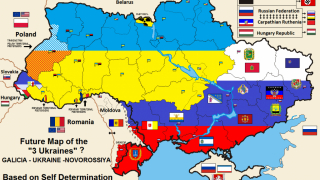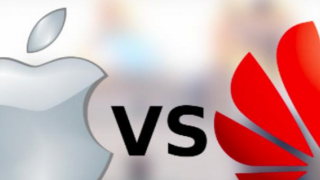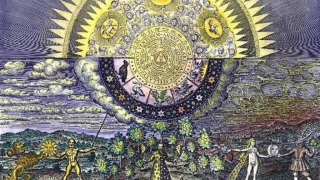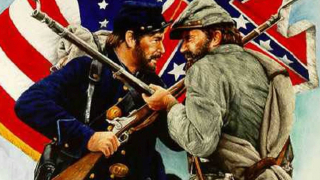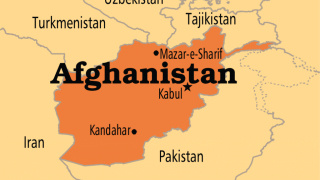Western collaboration with Neo-Nazi Ukrainian Parties
In the weeks before the February 2014 ousting of Ukrainian president Viktor Yanukovych, American politicians were prominent in Kiev inciting the marchers to destabilize government institutions. From early December 2013 Victoria Nuland, a high-ranking official in the US Department of State, made repeated trips to the Ukrainian capital while among other things she assisted in organizing protests.
What especially disturbed Washington, and to a lesser extent Brussels, is that Yanukovych had rejected overtures from the West, and was instead seeking closer ties with Moscow. Yanukovych shifted away from Ukrainian alignment towards the European Union, and also likely accession to NATO, both outcomes which successive US governments had desired.
Meanwhile, the protests against Yanukovych were steadily building in Kiev, spurred on by Western assurances. Significant numbers of the demonstrators, such as those in Kiev’s Maidan Square, consisted of heavily armed paramilitaries belonging to the fascist parties of Right Sector, Svoboda, Congress of Ukrainian Nationalists and Patriot of Ukraine. The latter organization, Patriot of Ukraine, was commanded at the time by white supremacist Andriy Biletsky. In November 2014, Biletsky was sworn in as a Ukrainian member of parliament (MP).
As December 2013 commenced, large numbers of Svoboda militants marching in Kiev were bolstered by 500 Right Sector members. Right Sector was then led by the neo-Nazi Dmytro Yarosh, also elected in late 2014 as a Ukrainian MP. Yarosh specialized in the formulation of firebombs which were hurled at specific targets, while his militias patrolled the streets in organized groups of 10 each. Yarosh later served as an adviser to the Ukrainian Armed Forces, and like so many of Kiev’s far-right figureheads he considers Russia as the country’s principal foe.
Among the marchers was Volodymyr Parasyuk, another man with a history of far-right activism and future MP who performed an important role in the marches; while more Ukrainians with far-right backgrounds like Boryslav Bereza and Semen Semenchenko, also soon-to-be MPs, participated in the “Euromaidan protests”.
Some Right Sector members wore military attire and helmets of the Waffen SS Galicia Division, which fought alongside the Nazis in eastern and central Europe between 1943 and 1945; the Right Sector in addition carries insignia based on the ancient swastika symbol. The thousands of fascist demonstrators were supported by mobs of like-minded soccer hooligans, all of whom created an atmosphere of terror in the Ukrainian capital.
Joining them were further activists of questionable repute, trained from 2004 as part of US Aid programs relating to the so-called Orange Revolution. The combined extremist groups laid siege to administration buildings in Kiev before spreading their wrath to the entire government quarters. Monuments were razed to the ground erected decades before for communists and workers. Journalists were attacked and their cameras dismantled.
These gangs then stormed the offices of the Communist Party of Ukraine, raising neo-Nazi flags over the buildings. Little of this was reaching the ears of Western audiences, however, who were hoodwinked by media disinformation regarding a “popular uprising” occurring in the country.
Amid the protesters was, as briefly mentioned Nuland, a US Assistant Secretary of State. Nuland was photographed distributing sandwiches, tea and cake to the dissenters, with Geoffrey Pyatt beside her, Washington’s then Ambassador to the Ukraine. America’s embassy in Kiev, that is Pyatt’s headquarters, was also doing its bit to undermine Yanukovych by training experts in information warfare and the smearing of state establishments, tactics used elsewhere in Syria, Tunisia, Egypt and Libya.
Nuland was accompanied by Catherine Ashton, a senior EU foreign affairs representative; Baroness Ashton is a long-time British Labour Party politician with links to Tony Blair. The EU was undertaking its customary role here as second-in-command to US government designs. Nuland and Ashton met more than once with the far-right leader of Svoboda, Oleh Tyahnybok, who was a key player in the supposed pro-democracy marches.
After visiting the protesters, Baroness Ashton was heartened to see the “determination of Ukrainians demonstrating for the European perspective of their country”. In following years, Nuland would herself meet on different occasions with Andriy Parubiy, a well known fascist and Ukrainian MP, who since April 2016 has held the position of chairman of Kiev’s parliament. Parubiy was another central figure in the demonstrations taking place against Yanukovych, and he was known as the “Kommandant”.
Nuland saw president Yanukovych too, and she informed him that police actions against the protesters were “absolutely impermissible in a European state, in a democratic state”. Nuland continued the high-minded imperial attitude by saying that Yanukovych must embark upon “immediate security steps and getting back into a conversation with Europe and with the International Monetary Fund”. The experienced Brazilian historian, Moniz Bandeira, outlined that Nuland “was received by President Yanukovych and she actually issued orders as if Ukraine was a colony of the United States, telling him to fold immediately to overcome the crisis”.
A great game was being played out here, obscured from the public. What really concerned Western elites and their business communities was not the usual nonsense of introducing freedom and democracy, but to expand their power over strategically vital areas flowing in natural resources. In doing so, it would also be to the detriment of Moscow’s clout in the region.
Yet by November 2013, Yanukovych was drawing nearer to his Russian neighbour; an unacceptable outcome, which explains the enormous rise in interference at this time in Kiev directed by American and EU politicians. It did not matter if this meant working alongside neo-Nazis, and paving the way for them to gain positions of power.
Nuland, a former US ambassador to NATO, visited Kiev for six days in early December 2013, where she consistently meddled in Ukrainian state affairs. Nuland returned to Kiev in February 2014 whereby, again acting on orders from the US government and Department of State, she went about choosing the Ukraine’s impending new president.
American senators Christopher Murphy and John McCain were likewise present in Kiev prior to Christmas 2013, as they remained in contact with the Department of State. Both men had a crucial part in subverting Yanukovych and they mingled with far-right groups, shouting to them that “America will stand with Ukraine”. Arizona Senator McCain convened talks with Tyahnybok and Parubiy, while he can be seen in photographs with them. In June 2015, McCain saw other far-right individuals such as the Dnipro Battalion commander Yuriy Bereza and Semenchenko, Ukrainian MPs since late 2014.
McCain, who died last August aged 81, was convincingly described by political scientist Moniz Bandeira as “a notorious warmonger and lobbyist” who “always defended the interests of ‘the international arms dealers, oil sheikhs’” and so on. McCain had long provided his services to the military-industrial complex, and to US oil manufacturers, receiving $700,000 in donations from them between the years 1989 to 2006.
McCain’s influence in the Ukraine dated to Soviet times, as part of his leading role in the International Republican Institute (IRI). He continued to have major interests in Kiev, hence his presence there, as too did the Obama administration. The Ukraine crisis was engineered by long-held geostrategic plans of US governments, their military arm NATO and the EU. Indeed, a remarkable 22 of the EU’s 29 members belong to the Pentagon-led NATO organization. Washington and Brussels wished to extend full control over the Ukraine’s deep natural resources. Thereafter, they planned to absorb the Crimea into the West.
According to a 2013 estimate by the US Energy Information Administration, the Ukraine holds 128 trillion cubic feet of shale gas, making it home to one of the largest reserves of such non-renewable materials in Europe. The Ukraine’s shale gas fields, for example in the Donets Basin, are also embedded with large quantities of oil. US organizations were compiling these reports with intention to siphon off the Ukraine’s earthly riches for corporate benefit – one of the real reasons why Nuland, Ashton, McCain and the likes were ensconced in Kiev.
George Soros, the Hungarian-American billionaire and strong critic of Vladimir Putin, has for many years been funnelling tens of millions of dollars into the Ukraine through his International Renaissance Foundation (IRF); and via separate Soros-run NGOs titled “Open Society foundations”. Soros is said to have had extensive business dealings with McCain, describing the latter upon his death last year as “a brave warrior for human rights”. Soros has in the past committed millions towards the election campaigns of Barack Obama and Hillary Clinton, among many other adventures.
From May 2012, big Western fossil fuel companies like Royal Dutch Shell were making moves to harness the Ukraine’s resources. Despite the objections of residents, in January 2013 Shell signed an agreement with Ukrainian corporation, Nadra Yuzivska, to exploit a territory the approximate size of 8,000 square kilometres between the east Ukrainian cities of Kharkiv and Donetsk – which contains over 1.5 trillion cubic metres of shale gas. In September 2013, Shell reached further agreements to extract shale gas reserves from areas around Donetsk.
The same company, Nadra Yuzivska, signed a $10 billion deal with US energy corporation Chevron in November 2013, for the further development of oil and gas production over a period of 50 years. Chevron was one of the multinationals that donated sums of money to McCain. There were schemes to hammer out separate contracts with ExxonMobil and Shell, which proposed to finance $735 million in shale gas manufacturing along south-west Crimea.
Moscow’s takeover of the Crimea in March 2014, a riposte to Yanukovych’s toppling the previous month, was consequently a sharp blow to Western geopolitical hopes. The Obama administration aspired to construct a NATO base in the Crimea, which would have had serious implications for Russia, relating to access of her warm water port at the Crimean city of Sevastopol on the Black Sea, where Moscow’s major fleet has been stationed since 1783.
There are narrow straits through the Black Sea, that eventually ensure safe passage for the Russian naval fleet into the Mediterranean Sea, and thereafter towards the Atlantic or Indian Ocean. These routes have in recent years allowed president Putin to provide critical support for his Syrian ally Bashar al-Assad – which further bolsters the Kremlin’s power and represents another setback to US influence.
The vociferous political and media reaction, to Russia’s incorporation of the Crimea, had little to do with concerns for Crimeans or international law, and plenty to do with loss of a strategic centre of massive significance.
Yanukovych’s decision to shun Western integration was actually based on understandable economic reasoning. On 17 December 2013, less than a month after severing negotiations with the EU, Yanukovych travelled to Moscow where Putin offered him a securities investment worth $15 billion; including the introduction of favourable gas prices reducing the previous cost by about 33%, permitting Kiev to save $3.5 billion per year. This agreement would enable the Ukraine to return to a level of economic growth.
The deal aligning Yanukovych to Moscow was much more financially advantageous to Kiev, by comparison to those expounded by the EU and IMF. The EU terms put forth in November 2013 – an institution reeling from economic crises in Greece, Portugal and Spain – were not sufficient to pull the Ukraine out of a mire in which its reserves were almost exhausted. The EU was also foisting upon Yanukovych a strict debt repayment program, that he would unlikely be able to meet, but which he was called on to accept.
In December 2013 the IMF dispatched to Yanukovych, with particularly harsh contingencies attached, a $15 billion bailout plan which included a 50% reduction in energy subsidies, social programs and pensions, the privatization of state-controlled enterprises, the prompt dismissal of state employees, etc.
It is therefore not surprising that Yanukovych was seeking closer relations with Russia. His overthrow was led by an array of far-right factions, once more belonging to neo-Nazi organizations like Svoboda, Right Sector and Patriot of Ukraine, strengthened by yet more extremists linked to the upcoming Azov Battalion. On the night of 21 February 2014, these groups raided the Ukrainian parliament building, Verkhovna Rada, demanding an immediate end to Yanukovych’s four year reign.
With Yanukovych possessing prior knowledge of the putsch and in fear of his life, he had fled Kiev hours earlier. Yanukovych claimed his vehicle had been shot at as he departed and that, “What we witness now resembles Nazi occupation”. The Nazi collaborator and terrorist Stepan Bandera was subsequently hailed a national hero, and is admired by a collection of MPs, from Parubiy and Biletsky to Yarosh. Pyatt, the US ambassador in Kiev, was reassured by developments and wrote that Yanukovych’s exit was “A day for the history books”.


